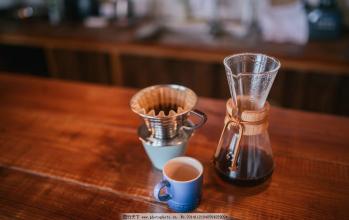Introduction to the method of grinding and calibration for flavor description of Arabica bean and Robesda bean
Introduction to the method of grinding and calibration for flavor description of Arabica bean and Robesda bean
Arabica is deeply loved by Chinese people with a short history of coffee contact because of its strong fruity aroma. it was introduced to China by missionaries in the 19th century and widely planted in Panzhihua, Sichuan, and the dry-hot valley of the Jinsha River above 1000 meters in western Yunnan. The sunshine in this area lasts for a long time and there is a great temperature difference between day and night. The local people solve the problem of insufficient seasonal rainfall by diverting water up the mountain, resulting in a unique aroma of "Chinese coffee". Among them, Banpo coffee grown in Arabica in Panzhihua, Sichuan is the most. Compared with Yunnan and Hainan, Panzhihua in the dry-hot valley has longer sunshine, higher altitude, greater temperature difference, good light quality and more virgin land. it is a rare and most suitable area for growing Arabica coffee. Banpo coffee farmers take advantage of this advantage to adopt unique planting and processing technology: first, "do not land on the ground": from collecting coffee beans to processing into finished products, coffee has been kept free from soil and other sundries to ensure its taste and quality; second, "graded collection": since coffee beans are not uniform and mature, coffee beans of the same level are collected centrally rather than mixed together. Such as manual operation, the use of a large number of labor force to collect, classify and process. The coffee here is rich in aroma, balanced between sour and bitter, and fruity. It is very popular with consumers and foreign coffee beverage giants.
Africa: C ô te d'Ivoire is one of the three largest coffee producing countries in the world, and its southern region produces Robusta original medium coffee with the largest production in the world. Ethiopia is a country with a history of coffee, and the name coffee came from in the southwest.
Asia: the coffee beans produced in Tamirna in southeastern India, with small grains and small production, are high-grade products of India. Indonesia is a large coffee producing country, the island of Sumatra is rich in Mantenin, granulated large beans are very hard, Mantenin was once a world-class gourmet coffee, but only the Blue Mountains did not appear before the market. Yemen, once famous for its rich mocha, is not as popular as it was in today's era.
Central and South America: Jamaica has become a topic of conversation because of coffee. Blue Mountain, which produces the best, once beat a variety of famous coffees. Because of its low production, it is usually mixed with Blue Mountains and other coffee beans. Brazil is known as the country of the coffee continent. The world's most important coffee producing area accounts for 1/3 of the world's total output. It is characterized by moderate acidity and strong sweetness. Colombia is the second largest producer after Brazil. Hawaii also produces stronger coffee because of its unique natural environment and climate.

Important Notice :
前街咖啡 FrontStreet Coffee has moved to new addredd:
FrontStreet Coffee Address: 315,Donghua East Road,GuangZhou
Tel:020 38364473
- Prev

Espresso with dregs after drinking-how to make espresso
After drinking espresso, there is a residue tasting-how to make espresso. It is impossible to make a good Espresso without a good coffee mix. Coffee must be matched with the sweetness, aroma and lubrication required by Espresso. Coffee beans must be fresh. We recommend using coffee beans within 4 days after baking. two。 Deeply baked beans will taste bitter and scorched. Experienced bakers will use shallow ones.
- Next

Italian coffee machine powder distribution method which brand of Italian coffee machine principle
Italian coffee machine powder distribution method which brand of good Italian coffee machine principle how to judge whether it has achieved the effect of uniform distribution of powder? In addition to carefully performing the action of the cloth powder and careful observation, the production process can also provide some clues to determine whether the cloth powder affects the quality of the extraction and Espresso. The general extraction time should be controlled at about 25 to 30 seconds.
Related
- Beginners will see the "Coffee pull flower" guide!
- What is the difference between ice blog purified milk and ordinary milk coffee?
- Why is the Philippines the largest producer of crops in Liberia?
- For coffee extraction, should the fine powder be retained?
- How does extracted espresso fill pressed powder? How much strength does it take to press the powder?
- How to make jasmine cold extract coffee? Is the jasmine + latte good?
- Will this little toy really make the coffee taste better? How does Lily Drip affect coffee extraction?
- Will the action of slapping the filter cup also affect coffee extraction?
- What's the difference between powder-to-water ratio and powder-to-liquid ratio?
- What is the Ethiopian local species? What does it have to do with Heirloom native species?

